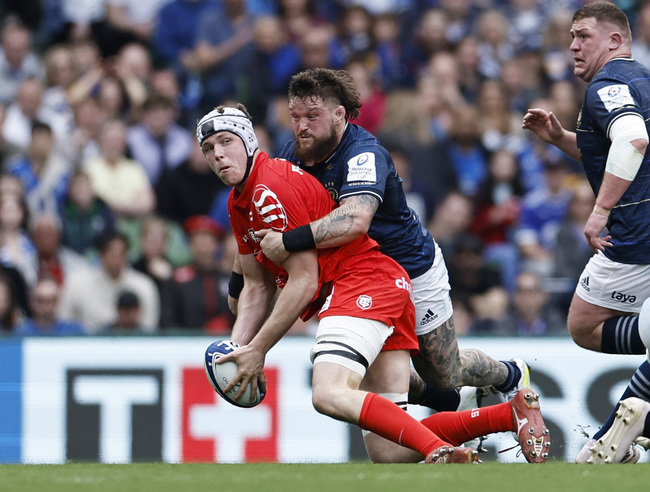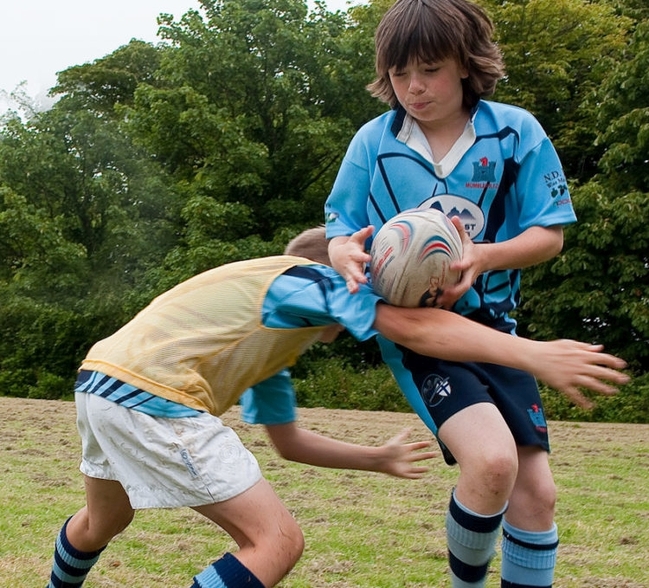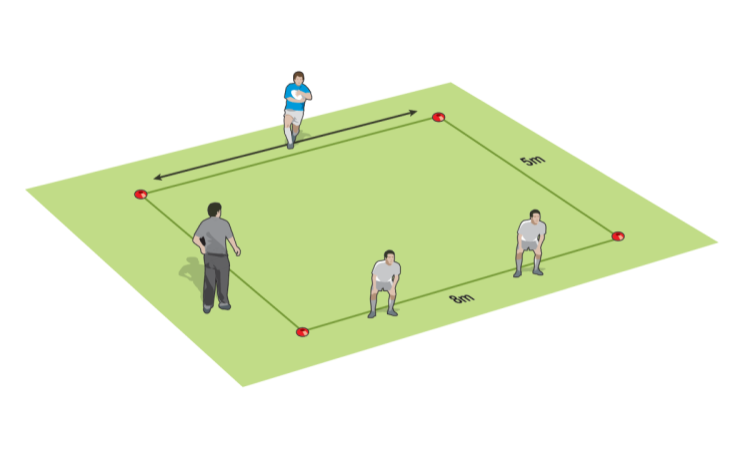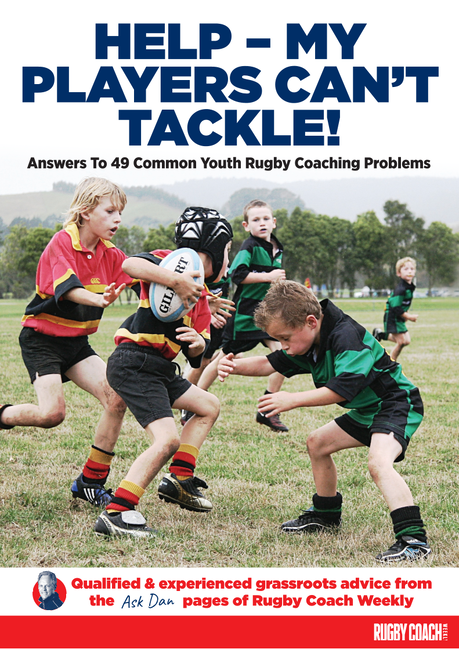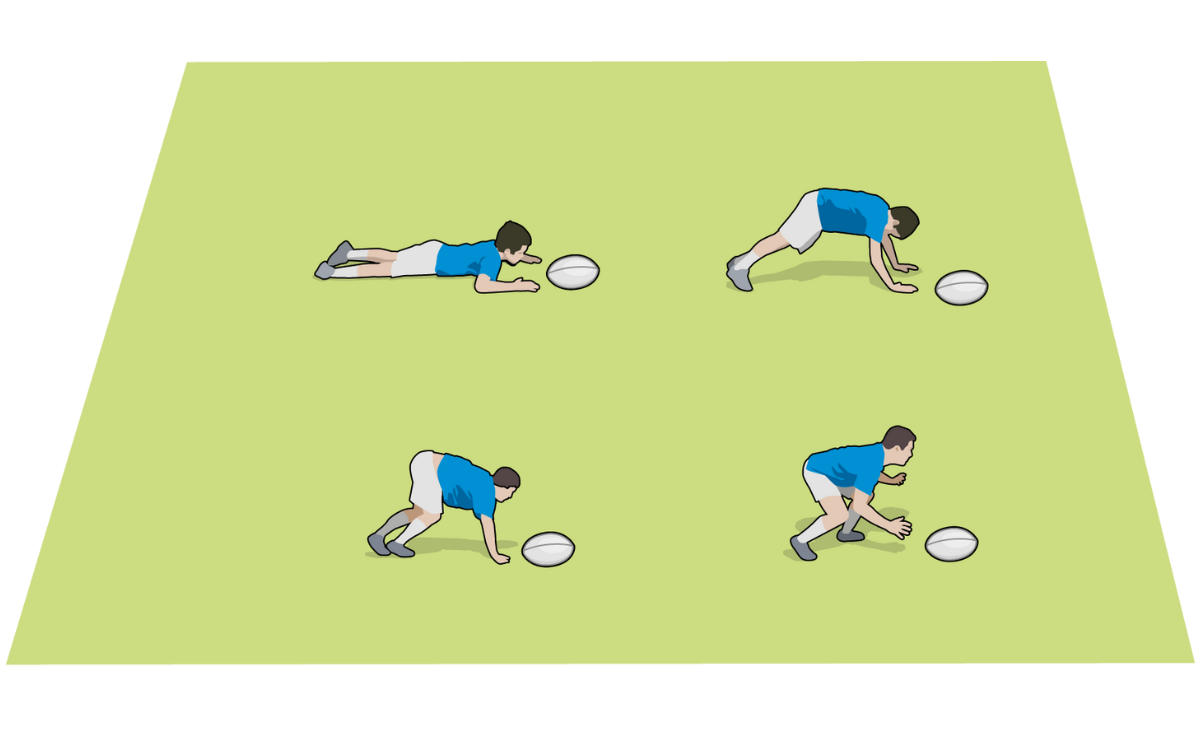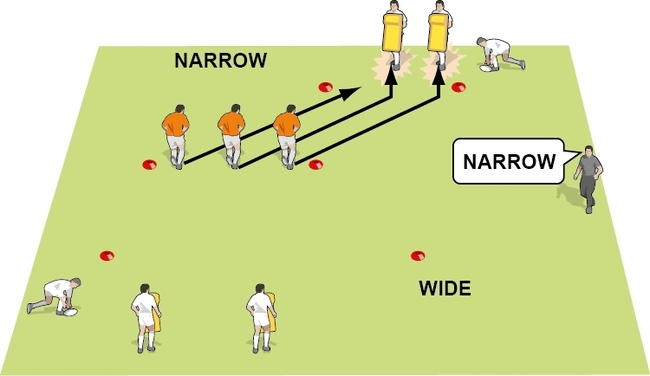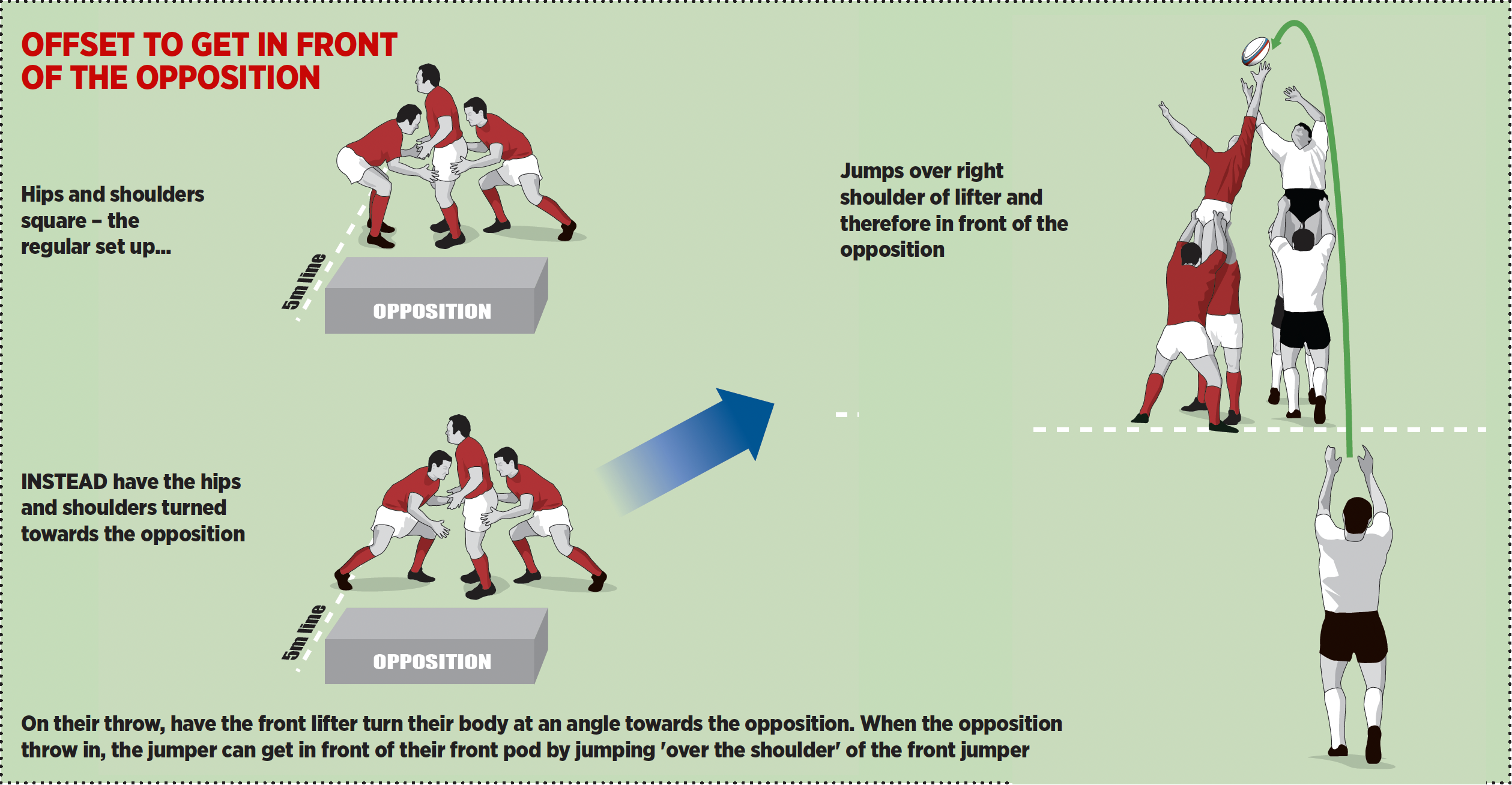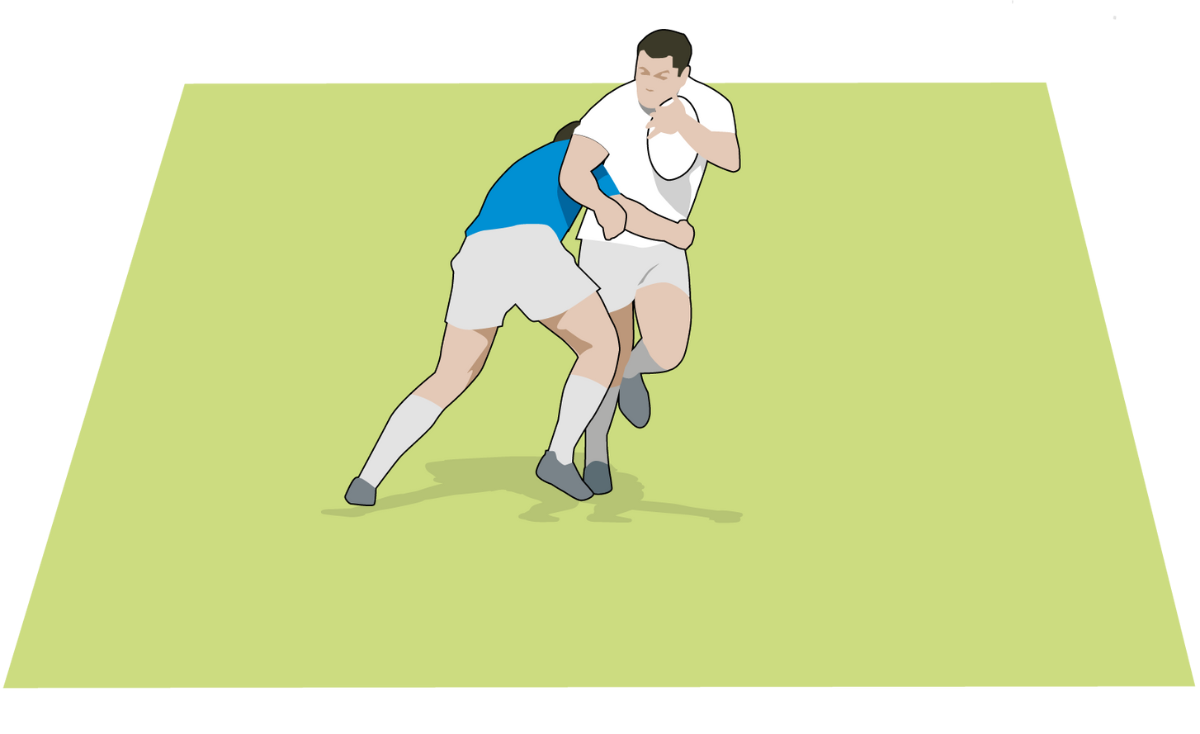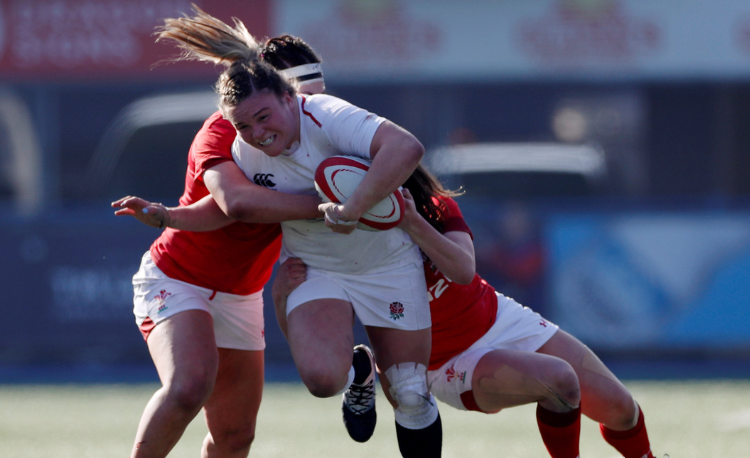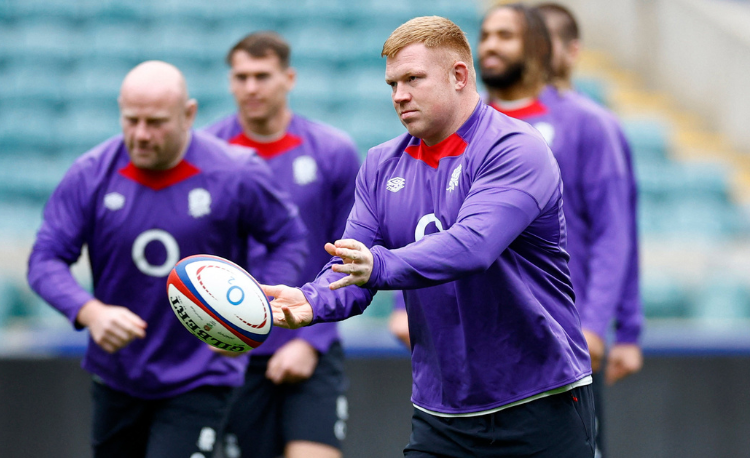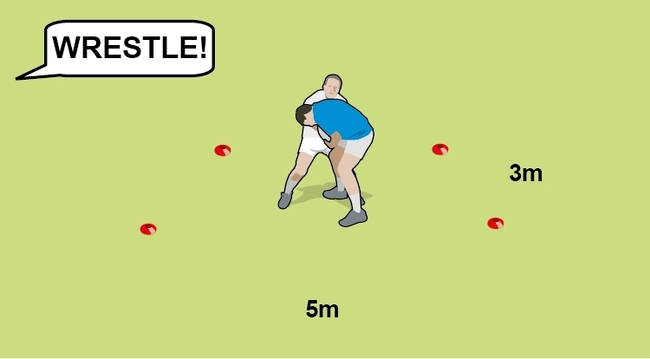After the tackle targets
Once a tackle has been completed, the tackler can be the best-placed person to contest and re-gather the ball or, if not possible, can become the first defender in the new defensive wall. By following these simple guidelines, you can educate and encourage your players to be more competitive for the ball and force more turnovers after certain types of tackle.
You always need to improve the speed and ability of the tackler to get back on to their feet and into legal position to contest the ball. It is also important for the tackler adopt an effective body position, post-tackle for successful ball-contesting and winning turnovers.
The end position of the tackler Is key to what can happen after the tackle is made.
DOMINANT TACKLE ON FEET

|
Position of the |
Position of |
Immediate tackler reaction |
Secondary tackler reaction |
|
Tackled player is on the ground with the tackler in front of them (usually a dominant front-on tackle, finish position). |
Tackler is still on their feet in front and above the ball (dominant tackle). |
|
|
NON-DOMINANT TACKLE OFF FEET

|
Position of the |
Position of |
Immediate tackler reaction |
Secondary tackler reaction |
|
Tackled player is on the ground with the tackler behind them (usually after a rear or side-on tackle, or when the ball carrier has been dominant in the tackle). |
Tackler is off their feet and behind the tackled player. (non-dominant tackle). |
|
|
DOMINANT TACKLE ON TOP

|
Position of the |
Position of |
Immediate tackler reaction |
Secondary tackler reaction |
|
Tackled player has been driven backwards by the tackler and is on their back on the ground. (Dominant tackle). |
Tackler is off their feet but in front and on top of the tackled player. (Dominant tackle) |
|
|
DOMINANT TACKLE BY SIDE

|
Position of the |
Position of |
Immediate tackler reaction |
Secondary tackler reaction |
|
Tackled player is side-on and perpendicular to the touch line (side-on tackle). Wide gate for entry into the tackle. |
Tackler is side-on and perpendicular to the touch line (side-on tackle). |
|
|
Premium Books
Newsletter Sign Up
Coaches Testimonials

Gerald Kearney, Downtown Las Vegas Soccer Club

Paul Butler, Florida, USA

Rick Shields, Springboro, USA

Tony Green, Pierrefonds Titans, Quebec, Canada
Subscribe Today
Be a more effective, more successful rugby coach
In a recent survey 89% of subscribers said Rugby Coach Weekly makes them more confident, 91% said Rugby Coach Weekly makes them a more effective coach and 93% said Rugby Coach Weekly makes them more inspired.
Get Weekly Inspiration
All the latest techniques and approaches
Rugby Coach Weekly offers proven and easy to use rugby drills, coaching sessions, practice plans, small-sided games, warm-ups, training tips and advice.
We've been at the cutting edge of rugby coaching since we launched in 2005, creating resources for the grassroots youth coach, following best practice from around the world and insights from the professional game.
